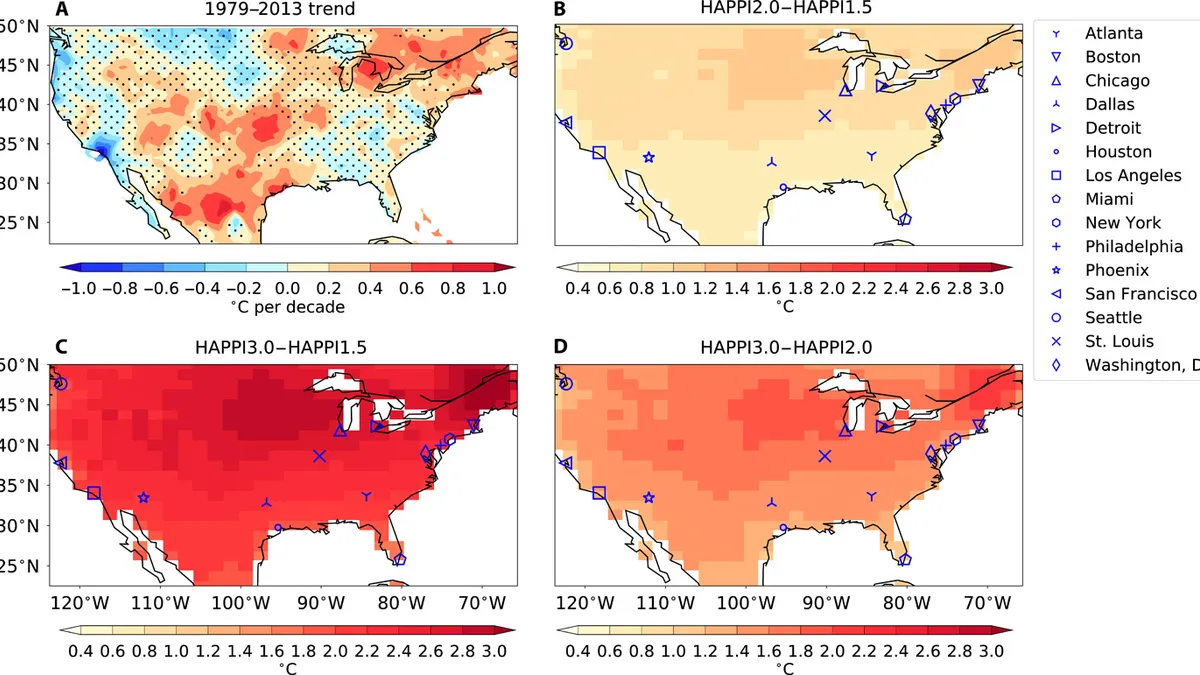Dive Brief:
- If countries follow through on their Paris Agreement pledges to limit global warming, hundreds of heat deaths in cities could be averted, according to a new report published in the journal Science Advances.
- The study modeled the impacts of extreme heat waves (ones expected to occur every 30 years) on 15 U.S. cities with reliable climate and health data. It found that, if global warming is limited to 2 degrees Celsius (2 C), between 75 and 1,980 annual heat-related deaths would be avoided. If warming was limited to 1.5 C, the number of avoided deaths rose to between 114 and 2,716 in those 15 cities.
- The number of modeled deaths depended on factors like population growth, aging, mitigation strategies and urbanization.
Dive Insight:
Among the many health effects of climate change that cities will face, heat waves are some of the most dangerous since they pose a direct risk to citizens — especially elderly populations and low-income families — and can strain infrastructure. In one of the most notorious examples, a three-day heat wave in Chicago in 1995 killed more than 700 people; a current heat wave gripping India has pushed temperatures to record highs in New Delhi.
The Fourth National Climate Assessment released in November projected that as many as 9,000 people could die prematurely in the 49 largest U.S. cities because of extreme heat and extreme cold.
The new report — written by researchers at the University of Bristol with support from the Union of Concerned Scientists — says that without strategies to avert climate change, those heat waves will become more frequent. If the world warms by 3 C, a wave like the 1995 Chicago incident could become a 1-in-1.4 year event; it would become a 1-in-2.8-year event under 2 C warming and just 1-in-4.7-year event under 1.5 C warming.
Although mortality rates depend on a number of factors that are hard to predict, the study’s projections found that, adjusting for population, Miami and Detroit would see the most deaths averted. In an interview with CityLab, co-author Eunice Lo of the University of Bristol, said that was in-part because Miami has one of the greatest shares of elderly people in the study, "and those above 65 are most vulnerable to heat than any other age group."
Besides greenhouse gas reduction strategies to reduce global warming, cities are also taking steps to reduce the heat island effect, which makes urban areas more vulnerable to heat waves. Green roofs, repainting dark surfaces and increased tree planting can all help lower temperatures in summer months; smart surfaces have also been shown to make infrastructure cooler and more resilient. The report is a reminder that avoiding the worst effects of climate change must go beyond reducing emissions to adapting to changing weather.











